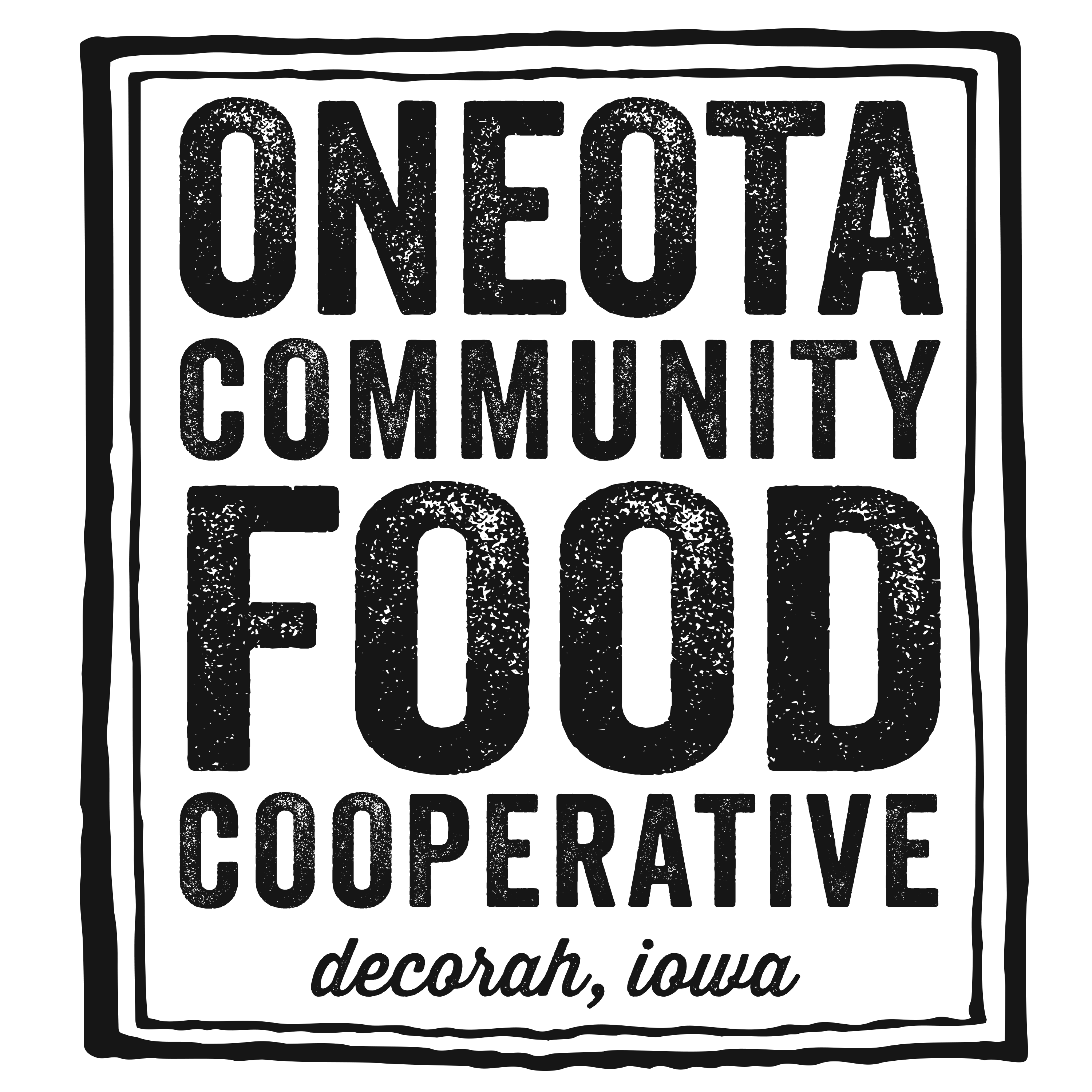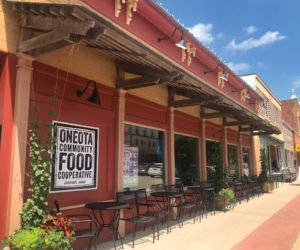By: Betsy Peirce – Produce Manager
Let’s begin our summer newsletter talking about two tart local fruits that bookend the summer growing season: Rhubarb and Aronia Berries. Patchwork Green Farm supplies us with rhubarb and Linus Barloon is our Aronia Berry guy.
Rhubarb
I have fond memories of summer desserts made by my mom and grandma oozing with tangy, sugary-sweet rhubarb. My favorite was my grandma’s rhubarb custard pie. Rhubarb has earned the nickname “pie plant” due to the thousands of ways it can be paired and sugared with other fruits and tucked into a buttery pastry crust. Rhubarb is not limited to pie alone. It can also be made into cobblers, buckles, grunts, crisps, sauces, compotes, and, thanks to creative chefs, there are even some savory applications for this ancient fruit. Pork pairs particularly well with rhubarb chutneys and salsas.
Rhubarb is related to the Buckwheat family and has been around for centuries. It originated in China and made its way along the Silk Road through Turkey and Europe and Russia. The medicinal properties of the Rheum palmatum, R. tanguticum and R. officinale varieties made rhubarb a much sought after plant, as valuable to the Europeans as cinnamon, opium and saffron. The astringent roots from these plants were used as a purgative for more than 5,000 years since they have such a strong laxative action; they have also been used for treating burns, dysentery, appendicitis, toothache, various skin maladies and more. Rheum x cultorum, the Latin name for our culinary rhubarb, was also well sought after and considered a valued trade item along the Silk Road. It was comparable to the value of diamonds, pearls and silk.
Rhubarb first came to the United States in the 1820s, entering the country in Maine and Massachusetts and moving westwards with the European American settlers. Rhubarb is technically a vegetable. However, in 1947 the U.S. Customs Court in Buffalo, New York passed an official ruling that rhubarb should be classified as a fruit since that is how it is principally eaten. There was an advantage gained by the state in declaring it a fruit and that was a reduction on imported rhubarb tariffs because tariffs were higher for vegetables than fruits.
Rhubarb stalks can vary from a deep pink color to a lovely green. They have virtually the same flavor and both are suitable for cooking. The pink color of rhubarb can be attributed to anthocyanins, powerful antioxidants that are present in red colored foods. If you have only green rhubarb in your patch, try adding a few strawberries to your recipe to color it red (and to boost the antioxidant content). Not to mention that their flavors combine splendidly! Rhubarb is rich in Vitamin C, fiber and Calcium, although the high Oxalic Acid content in rhubarb prevents your body from absorbing the calcium completely.
While we certainly take its illustrious origins for granted, we do not lack in appreciation for its appearance every spring. Below are some recipes for getting you started on your rhubarb taste adventures.
Aronia Berries
So what is a superfruit anyway? It’s actually a marketing term used to describe fruits that are extremely dense in nutrients and in antioxidants. Aronia berry fits the bill as having the highest recorded level of anthocyanins of any fruit. Higher than acai, grapes, elderberries, blueberries, and other fruits (http://www.motherearthnews.com)
More specific research into just what makes Aronia berries antioxidant powerhouses reveals that “ORAC, Oxygen Radical Absorbance Capacity, is the method that is used to measure the antioxidant capabilities of biological samples such as fresh fruits and vegetables. The ORAC value recorded for Aronia is about 58 percent higher in antioxidant levels than blueberries and over 90 percent more than cranberries. Proanthocyanidins have benefits that are directly related to protection against Cardiovascular disease. The concentration of PAs in the Aronia berry is among the highest reported value of any food.” http://www.motherearthnews.com/real-food/aronia-berries-zw0z10zkon.aspx?PageId=1#ArticleContent#ixzz2SCNUyxKH
Many health benefits are thought to be related to consuming richly pigmented berries due to the high content of Anthocyanins. Diseases related to aging and neurological diseases, inflammation, diabetes, bacterial infections, and fibrocystic disease may benefit from consumption of Anthocyanins.
Aronia berries were grown for hundreds of years by Native Americans. A few old timers have seen them at the Co-op on our shelves and said that they have big patches growing wild on their farms – most knew them as Chokecherries and most didn’t eat them anymore. They were given the nickname chokecherries because they are quite astringent and not at all sweet. However, when combined in a yogurt smoothie or in baked goods, they are wonderful. Of course, back then there was no invented term like “superfruits” and so most people knew they were there but assumed them to be inedible. We now know them to be an excellent food that can be grown easily in the Midwest and are remarkably resistant to pests. Stop in during August and September for a taste of the remarkable Aronia Berry. My favorite combination is one container of Greek Gods brand Honey Greek Yogurt, 1 banana and a half a package of Aronia berries. The color achieved by blending these three ingredients, as well as the yumminess factor, will knock your socks off!



